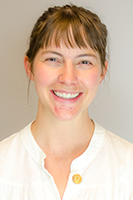Aquaculture Science

Aquaculture – Shellfish Specialization - AAS
Have you ever looked out at the coast and wondered what the lines of buoys along the surface might be? Chances are, if you are in Washington state, you might be looking at one of the most sustainable forms of agriculture that exists: shellfish farming. Washington continually ranks as the nation’s top producer of farmed shellfish, which includes oysters, clams, and mussels, and is a robust and growing sector of the blue economy. If you share a passion for healthy oceans and providing food for your community, then the Aquaculture- Shellfish Specialization AAS Degree is the right path for you.
Demands for sustainable seafood are on the rise as the global population is projected to exceed 9 billion people in 2050. To help meet this need, domestic seafood production is on the rise, and students in this program will be trained in the essential career skills to join this expanding and in-demand job sector. Students will learn about shellfish reproduction, nutrition, and health, while performing a variety of hatchery and field operations. Training courses are offered in both in-person and online formats to increase scheduling flexibility to allow for continuous live animal and algae care and travel to field sites.
To further enhance the learning experience, students are provided off-site training in a variety of industry partner facilities, including the nation’s largest family-owned shellfish farm. In addition to shellfish aquaculture, students will be exposed to the emerging sector of seaweed farming. Seaweed farming is relatively new to Washington state and is currently the fastest growing sector of aquaculture.
Ready to start your career in shellfish culturing? Your training experience awaits at Washington state’s only dedicated college hatchery for shellfish and seaweed workforce training.
Upon completion of this AAS degree, students will also receive the Aquaculture Theory, Fundamentals of Aquatic Science, and Seaweed and Mollusk Culturing Techniques Certificates.
Employment Information
Data are provided on a program (not credential) level
71% BTC graduate placement rate1
$49,303 starting annual wage2
$56,597 average annual wage2
$66,348 potential annual wage2
Entry Information
When Can I Start?
This program typically starts in Fall, Winter and Spring quarters.
What are the Minimum Entry Requirements?
A completed college admissions application and placement in English and Math. BTC uses a Guided Self-Placement process to help you choose the best starting point for your English and Math courses. Your selections will determine whether you begin with program coursework or complete prerequisites classes first.
To get started or for help determining your English and math placement, contact the Outreach department at Outreach@btc.edu
What are My Next Steps?
Classes
Total Program Credits: 100
General Education Core Courses
AMATH 111 Applied Technical Math 5 CR OR Higher AENGL 100 Applied English 5 CR OR ENGL& 101 English Composition I 5 CR OR Higher CMST& 210 Interpersonal Communication 5 CR OR CMST& 220 Public Speaking 5 CR OR PSYC& 100 General Psychology 5 CR OR SOC& 101 Introduction to Sociology 5 CR TOTAL General Education Core Course Credits 15 CR Core Courses for Program
AQUA 101 Introduction to Applied Sciences 2 CR AQUA 111 Applied Techniques: Fall 3 CR AQUA 112 Applied Techniques: Winter 1 CR AQUA 113 Applied Techniques: Spring 2 CR AQUA 121 Principles of Aquaculture 5 CR AQUA 122 Principles of Fisheries Science 5 CR AQUA 131 Aquatic Chemistry with Lab 5 CR AQUA 141 Research Methods 3 CR AQUA 271 Data Analysis for Aquatic Sciences 5 CR AQUA 272 Introduction to GIS 5 CR AQUA 273 Animal Genetics with Lab 5 CR AQUA 274 Organismal Biology with Lab 5 CR ENVS& 101 Fundamentals of Environmental Science 5 CR OCEA& 101 Introduction to Oceanography with Lab 5 CR TOTAL Core Courses for Program Credits 56 CR Program Specialty
AQUA 201 Aquaculture Internship I 6 CR AQUA 221 Seaweed Culturing 2 CR AQUA 222 Microalgae Culturing 2 CR AQUA 223 Shellfish Hatchery Production 2 CR AQUA 224 Shellfish and Seaweed Culture Practicum: Winter 1 CR AQUA 225 Shellfish Farm Production 5 CR AQUA 226 Shellfish Culture Practicum: Spring 1 CR AQUA 252 Aquaculture Management 5 CR AQUA 297 Aquaculture Internship II 5 CR TOTAL Program Specialty Course Credits 29 CR
Program Outcomes
After successfully completing the AAS degree, students will be able to:
- Demonstrate proper shellfish, seaweed, and microalgae culturing techniques for hatchery and farm production.
- Design and visualize aquaculture systems that implement industry-standard protocols and best practices.
- Describe the form and function of commonly cultured shellfish and seaweed species, as related to reproduction, growth, and health.
- Explain current regulations, policies, and permitting in the aquaculture industry that promote sustainable production.
- Evaluate industry best practices for food production and restoration, with an emphasis on Pacific Northwest shellfish.
- Summarize the fundamental theories of aquatic science, as related to biology, chemistry, ecology, and environmental science.
- Produce technical communications to effectively illustrate research skills and data literacy.
- Conduct workplace operations in a safe and professional manner with an emphasis on teamwork skills.
Employment Outlook
The Fisheries & Aquaculture Sciences AAS degree prepares students for direct entry into diverse workforce opportunities. Graduates qualify for Hatchery Specialist 2 and Scientific Technician 2 positions with Washington Department of Fish and Wildlife, Biological Technician GS 4 positions with the federal government, and employment in tribal government, private, and nonprofit sectors.
The average annual wage in this field is $45,521, with an earning potential of about $57,231 per year.*
Program graduates work as fish hatchery specialists, fish culturists, fisheries technicians, shellfish hatchery workers, and scientific aides.
Faculty & Support

Brittany Palm
Fisheries & Aquaculture Sciences
Sara Smith
Fisheries & Aquaculture Sciences
Kai Rick
Hatchery Operations Specialist
Steeve Pomerleau
Fisheries & Aquaculture
Kai Rick
Hatchery Operations Specialist
Steeve Pomerleau
Fisheries & AquacultureContacts
If you have questions about this program or want help with the admissions steps to Bellingham Technical College, please email outreach@btc.edu.
Current students wanting academic planning and support, can connect with the program Instructor(s) or email FisheriesNav@btc.edu
